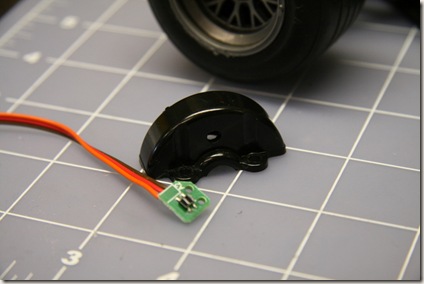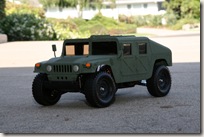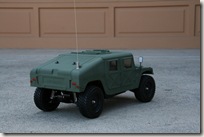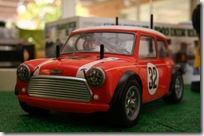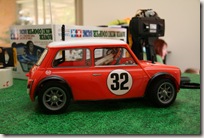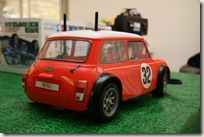Being a fan of Formula 1 and Tamiya RC cars it was only natural that I get an F1 car. The F201 is a 4WD shaft driven chassis with an inboard double wishbone suspension and a mid-mounted motor, so it resembles an actual F1 car in more ways than the body.
Below is an old picture of it (since I switched to digital it now has a much smaller antenna tube).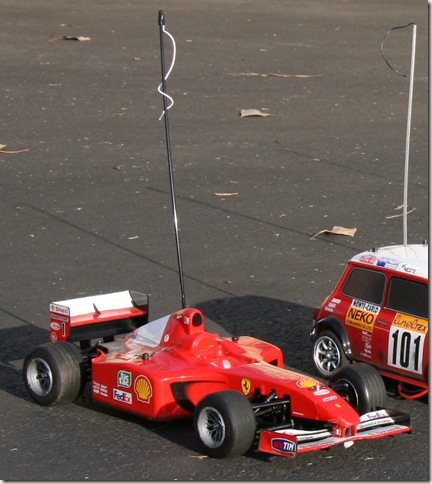
The F201 chassis has been discontinued by Tamiya (probably because of licensing fees (Ernie Ecclestone always wants more money!)). So I had to buy this from Ebay. The New In Box F201’s command ~$300 (Tamiya’s old MSRP) easily so I bought an assembled but never run one. I’ve taken it apart and re-assembled it a couple of times already :) This car is very compact, so getting to the bits you want is rather cumbersome.
The F201 comes with a full bearing kit and a Tamiya “black can” (sport tuned). I put that motor in my Lunch Box and put in a 19T Reedy Challenger instead. I also got an aluminum motor guard instead of the stock plastic one to provide better cooling. The ESC I chose was the Futaba MC401CR. This combination has worked really well. The ESC is programmable via their Link software (that you have to run in windows2000 compatibility mode under XP btw) and you can download Volt/Current draw logs (up to 8 minutes). It’s exactly the kind of thing I like to mess around with :)
The stock tires that come with the kit are pretty weak and wear out VERY quickly. I’ve since bought two sets of reinforced tires; Type A and Type B, the A’s have more grip and are softer than the B’s (which are designed for warmer temperatures). I’ve used my B’s the most and they’re barely worn.I’ve also had to replace:
The lower suspension arms with reinforced ones.
The front gearbox (suspension mount bent in a crash).
The differentials with lightweight ones (the cap screw that holds the stock ones together just broke).
Another "gadgety” upgrade is the Spektrum SR3300T reciever, it sends telemetry back to the radio. The temperature sensor is easy to install, but the RPM sensor was a little harder. The instructions tell you to aim the infrared sensor at a piece of reflective tape on the spur gear. There’s a slight problem with that plan… the spur gear is in a SEALED gearbox. I very carefully drilled a hole in my gearbox and thought I was good to go. Except the sensor also wants to be 1/8 of an inch from the reflective tape. My solution was to superglue a round piece of plastic to the spur gear and then stick the tape on that.
The RPM sensor and the drilled spur gear cover
The plastic piece and reflective tape on the spur gear, temperature sensor can also be seen on the motor.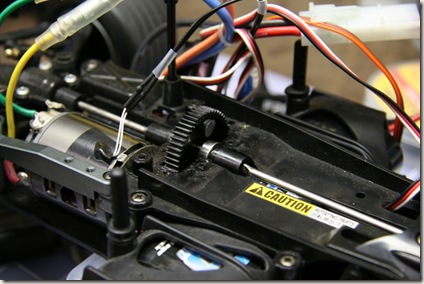 Spur gear cover on, then I used some two-sided tape (same stuff that comes with your ESC or radio receiver) to the IR sensor, then some electrical tape to cover it all up.
Spur gear cover on, then I used some two-sided tape (same stuff that comes with your ESC or radio receiver) to the IR sensor, then some electrical tape to cover it all up. 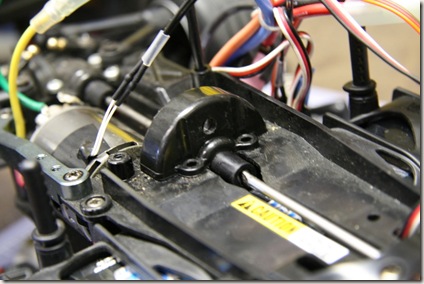
More upgrading to the F201 to come :)
